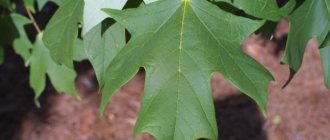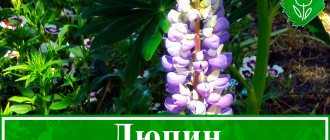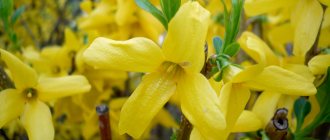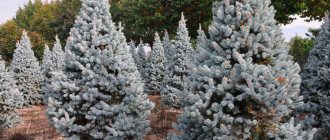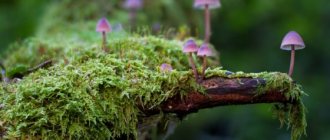Amaranth is a plant that attracted the interest of gardeners at the beginning of the twentieth century. This interest is due to emerging information about its health benefits. Cultivated plant varieties were also brought to Russia from the West. At first, amaranth was grown in the fields as feed for livestock, and in villages it was used to feed various livestock. Now there are many decorative amaranth hybrids obtained through selective breeding.
- 2 Useful properties and contraindications
2.1 Contraindications
- 5.1 Video: how to plant amaranth in open ground
Description and use cases in landscape design
Description of the plant is characterized by the formation of small flowers, which are collected in fairly dense and very attractive inflorescences of a spike-paniculate type. All species and varieties belong to the Amaranth family (Amaranthaceae).
The stem part can be either simple or branched. The alternate, entire foliage also looks very attractive, and can be diamond-shaped, lance-shaped or ovoid. The base of the leaf is elongated into a petiole, and the apical part has a notch and a small tip. The axillary type flowers are arranged in bunches, and the apical ones are collected in dense paniculate spike-shaped inflorescences. The plant blooms profusely, after which it forms fruit-pods with seeds. The color of the plant is green or purple-red.
general information
Amaranth is a herbaceous annual of the same family, native to South America. Many thousands of years ago, the Indians considered it the flower of immortality and brewed a miraculous drink from it. Amaranth grains are popular all over the world even now.
Amaranth inflorescences are sometimes called cock's comb or fox's tail for their characteristic shape and color. They are equally good at any time of the year, fresh or dry. A large panicle is collected from soft dense spikelets of burgundy, purple or yellow color. It is almost impossible to visually isolate individual flowers.
Amaranth blooms in early summer and continues to bloom until frost. It has large matte green or burgundy leaves with raised veins. Amaranth is a tall and dense plant up to 1.5, and sometimes up to 3 m.
Photo: 2sotki.ru
Types of amaranth
Today, a huge number of species are known that grow in natural outdoor conditions in regions with warm and temperate climates. In total, almost one hundred species are distinguished, but seventeen species of such a plant are grown in our country. The category of the most popular and famous types of amaranth is represented by tricolor, caudate, crimson, paniculate, upturned and common amaranth.
Amaranth caudate
A. caudatus has very beautiful hanging and thin inflorescences that resemble a fox's tail. The most popular ornamental variety is "Viridis" with green or cream inflorescences. A wonderful honey plant.
Photo gallery
Amaranth tricolor
Tricolor (A. tricolor) has rather narrow, sometimes wavy leaves of a tricolor color with red, yellow and green tints. Inflorescences are erect, strongly branched. Ornamental varieties include 'Flaming Fountains', 'Illumination' and 'Joseph's Coat'.
A. paniculata
Paniculatus (A.cruentus, syn. A.paniculatus) is characterized by the presence of a brownish-red hue of foliage and drooping or vertical inflorescences with original drooping tips. Ornamental varieties include 'Zwergfackel', 'GrueneFackel', 'PygmyTorch' and 'RoterDom'.
A. vegetable
The vegetable was grown as a cereal crop, but today it is recommended for use in fresh, boiled, fried and dried form. Most often it has a dark green or purple color. The category of the most popular varieties includes “Krepysh”, “Valentina”, “In Memory of Kvasov”, “White List”, “Kharkovsky-1” and “Shuntuk”.
Indoor amaranth
They prefer to grow indoor amaranth in the Urals, as well as in Siberia and other regions with insufficiently favorable climatic conditions. Indoor amaranths grow well in standard medium-sized flower pots. Planting seedlings or growing from seeds requires the use of universal soil for flowering ornamental plants.
Useful properties and contraindications
For medicinal purposes, caudate amaranth is mainly used. To obtain raw materials, leaves are collected before flowering, and during flowering the panicles are cut off. Then comes the turn of collecting seeds and digging up roots.
Amaranth seeds are rich in protein. It is similar in composition to cow's milk.
Amaranth seeds can be consumed daily as a dietary supplement
Healing oil is made from the seeds and is used for the following problems:
- atherosclerosis;
- heart pathologies;
- high blood pressure;
- female gynecological diseases (cervical erosion, ovarian inflammation, fibroids);
- cataracts;
- dysfunction of the gastrointestinal tract;
- periodontitis.
Thanks to its immunostimulating and regenerating properties, amaranth promotes faster treatment of burns, cuts, suppuration and tumors. It has a beneficial effect on the skin, preventing premature aging.
Fresh salads are prepared from amaranth leaves, which benefit people with diabetes, excess body weight and those suffering from chronic constipation. For the winter, you can dry the grass and use it as a seasoning.
One of our readers spoke in more detail about the anti-cancer properties of amaranth in the article.
Contraindications
Despite many beneficial properties, amaranth has a number of contraindications. These include:
- individual intolerance to individual components in the composition;
- urolithiasis or cholelithiasis;
- acute pancreatitis and cholecystitis.
Side effects include nausea and slight dizziness.
The best varieties of amaranth
Currently, domestic and foreign breeders have developed a large number of various varieties of amaranth, which differ not only in external characteristics, but also in resistance to external adverse factors and demanding care.
Even a beginner or time-poor amateur gardener can grow almost any variety on his own.
Illuminations
The popular and often grown in the countryside variety “Illumination” or “Illumination” is a fairly powerful and well-developed plant no more than 60-70 cm high with very impressive and large foliage. Young foliage is reddish-yellow , while older leaves are reddish-orange. The lower leaves have a very original bronze tint.
Molten fire
A special feature of the Molten Fire variety is its high decorative properties. This bicolor variety successfully combines red-raspberry and chocolate brown colors into the seed. The culture is light-, moisture- and heat-loving , has rapid growth, but does not tolerate severe frosts. Preference is given to light and fertile soils.
Perfect for single and group planting, decorating borders, decorating fences and the center of flower beds. Cut inflorescences are used in bouquets and flower arrangements.
Raspberry beads
The standard height of an adult plant does not exceed 80-100 cm. This fast-growing annual crop has a powerful and fairly branched stem part no more than a meter high. This unpretentious variety can be planted to decorate walls, fences, low buildings and create living decorative hedges. Group plantings look great against the backdrop of decorative deciduous and flowering shrubs.
Cherry velvet
The highly decorative variety “Cherry Velvet” refers to annual herbaceous ornamental plants that are widely used in decorating garden space and personal plots, and are also used in creating bouquet compositions.
The variety is characterized by the formation of flowers collected in very neat, highly decorative paniculate-type inflorescences. The bush is compact, no more than 40-45 cm high, with fairly dense foliage. The inflorescences are erect, exotic, deep cherry-purple in color.
Brazilian Carnival
The variety "Brazilian Carnival" is a bright decorative and foliage mixture. Cute colorful bushes reach a height of half a meter. The aerial part is covered with elongated, ovate, tricolor leaves.
The foliage is greenish-yellow, reddish-burgundy and pinkish-burgundy in color. The variety has proven itself well in both single and group plantings on lawns, in the background of flower beds or mixborders.
Other varieties for indoor and garden cultivation
Amaranth “Lacy” blooms before the onset of noticeable frost. The above-ground part is powerful and slender, decorated with very lush sultan inflorescences, which resemble biscuit dough in their appearance. The height of the annual is 120 cm. The decorative leafy amaranth “Red Octopus” . These are very cute multi-colored bushes no more than 35-40 cm high with elongated ovate tricolor foliage of greenish-burgundy, red and bronze shades.
Amaranth “Perfecta” is no less popular among amateur gardeners . The bushy type of medium growth plant reaches a height of 75-90 cm. The foliage is very decorative. The upper leaves are rich red, yellow and green, and the lower foliage is green with very pronounced burgundy splashes.
, the varieties that are very undemanding in care and unpretentious to soil and climatic conditions are most suitable
- dark leaf "Mermaid";
- grain "Helios";
- grain "Lera";
- stern "Aztec";
- stern "Sem";
- "Magic Fountain";
- "Green Thumb";
- "Bronze Age";
- "Glamourous Shine";
- "Christmas tree decoration";
- "Red Torch";
- "Red Leaf";
- "Handsome";
- "Inspiration";
- "Dance of Fire";
- "Aurora";
- "Kesha";
- "Polovtsian dances";
- "Twins";
- "Velveteen".
A varietal feature of the medium-growing “Pigmy Torch” is the formation of dark purple inflorescences, which in the autumn acquire an unusual chestnut hue. The foliage of the plant is highly decorative, multi-colored. Amaranth "Cascade" up to 70-80 cm high has a powerful and erect stem part. Small flowers are collected in paniculate inflorescences of drooping type, no more than 60-80 cm long. Flowering is long-lasting and very abundant. The unpretentious variety “Cherry Jam” belongs to the early ripening garden crops. The above-ground part is up to one and a half meters high. The plant is an excellent source of valuable vegetable protein that is easily digestible.
Origin
Everyone has probably seen amaranth, a colorful plant from the Amaranthaceae family, if not as a plant, then in the form of grain or cereal.
Flowering in June
Amaranth is a herbaceous medicinal plant that was known to the Mayan and Aztec civilizations. All its parts are used by humans:
- Stem,
- Foliage,
- Root,
- Seed.
Its modern name comes from the Greek word “immortal”. However, it grew not only in Greece. It has long been cultivated in Latin America, then it was a very famous food crop, grown in many areas of the continent and used as food, along with corn, beans and zucchini.
Note! Archaeological samples of an amaranth seed and dried flower dating back to 4000 BC were found near the Mexican town of Tehuacán, in the state of Puebla.
From historical sources it is known that white amaranth is an assistant in ancient religious rites. They were carried out by the Aztecs and Incas. The most popular of these was the process of making statues of deities and idols. For this purpose, women took a plant seed, dyed it red using human blood (from a sacrifice), and mixed it with honey and molasses. Then they sculpted the figurine and broke it after the ritual. The fragments were eaten by all members of the tribe.
Additional Information. Not everyone knows that a journalist and model, Amaranta Hanks, was named after a cereal crop. Some time ago, the star girl opened the world's first university, where participants study sensitive issues. Amaranta "movie star" Henk introduced a special training program, and an active fight against professional burnout is being waged. The girl herself believes that there should be no routine in life - this is the plague of the modern generation. Amaranta Hank warns about the age of 18+ students, the rector is determined and serious.
Features of growing amaranth from seeds
Seed propagation is one of the most convenient ways to obtain a beautiful and unpretentious annual. Features of growing technology:
- sowing in the last ten days of March;
- the use of soil based on humus and clean, disinfected medium-grained sand in a ratio of 3:1;
- the height of the planting container with drainage holes is at least 10 cm;
- sowing seed material to a depth of one and a half centimeters;
- use of film coating to obtain a greenhouse effect;
- germination in a warm and fairly bright place with watering from a household spray bottle;
- maintaining the air temperature at 18-22°C.
It is recommended that the mass seedlings that appear be planted into separate seedling containers. Diving is carried out after three or four true leaves appear on the sprouts. After replanting, it is advisable to pinch the apical part of the growing point, which will allow the plant’s root system to quickly and well become stronger. Planting of seedlings in a permanent place in open ground occurs in the first ten days of May. If necessary, temporary film cover is used.
Amaranth: features of planting and care in open ground
After sufficient warming of the soil, planting in open ground is carried out. The growing area must have good lighting and good drainage. Preference should be given to light and nutritious soils that are sufficiently limed. The annual plant is extremely difficult to tolerate low temperature conditions, as well as waterlogging of the soil, which must be taken into account when choosing a place for cultivation.
At the preparatory stage, the soil needs to be dug up with a spade and at the same time adding 20 g of nitroammophoska per square meter of the flower bed. Depending on the varietal and species characteristics, the planting and cultivation scheme may vary. The average distance between seedlings should be approximately 10-30 cm, maintaining a distance between rows of 45-70 cm. Immediately after planting, for about a couple of weeks you need to very carefully monitor soil moisture levels.
During the first month, the seedlings are characterized by very slow growth and development, so at this stage the amaranth needs to be provided with proper care, which includes watering, weeding and loosening the soil. At the stage of activation of growth processes, watering should be quite rare , only in very dry periods. Feeding is done three to four times per season. For this purpose, it is recommended to use a solution based on mullein, diluted in a ratio of 1:5 and wood ash at the rate of a glass per bucket of water.
In order to prevent plant parasites, the above-ground parts of garden crops are treated with preparations such as Actellik or Fufanon. To prevent damage by fungal diseases, it is allowed to use “Colloidal sulfur”, “Copper sulfate” and “Copper oxychloride” for spraying ornamental garden plants. Processing is carried out in dry and windless weather.
How to care for amaranth at home
Recently, more and more often, amateur gardeners are growing low-growing and compact varieties of amaranth in home gardening conditions. As a rule, preference in indoor culture is given to vegetable and grain varieties, which can diversify the diet. Universal soil can be used. The soil mixture with which flower pots are filled must be loose, retain moisture well and contain a full range of all microelements necessary for growth and development.
To minimize the amount of fertilizing during the growing season, it is recommended to prepare a substrate based on turf soil, peat and humus in equal parts with the addition of potassium fertilizer, superphosphate or wood ash. The volume of a flower pot for one plant should be at least a liter, but the depth should be significant. When picking, the seedling must be buried down to the first leaves, which will allow you to get a strong plant. Summer cultivation is carried out on balconies and loggias. Caring for the crop is standard and consists of timely watering and a couple of fertilizing with complex fertilizers.
The amaranth flower garden looks very impressive right up to the frost. The plant reproduces well by seeds and can be planted in almost any area, thanks to which the culture has gained immense popularity among flower growers in our country.
Reproduction methods
All types of amaranth reproduce from seeds. Seed collection begins in the fall, when the lower leaves fall off and the panicle begins to dry out slightly. It is important not to miss the moment, as the seeds quickly fall to the soil. It is better to cut off the unripe panicle and place it in a ventilated room for ripening.
After a few days, rub the inflorescences with your hands over a white cloth or paper, and then pour the seeds into a small storage container. Amaranth is beautiful, unpretentious, huge, magnificent, useful, and these are not all the advantages.

